The Dance of Discovery
Contemporary dancer-choreographer Anoushka Kurien’s ‘to be danced’, a solo piece performed as live dance and video, allows us, the viewer, to draw our own patterns by delving into questions around movement identity, gender and repetitive visual self-representation
Anoushka Kurien
Well-defined movement arts and practices begin from varied but simple physical places – head and tail connectivity, searches for stability in breath, structures in crawling, searches for risk and instability in spinning or falling, even the play in having opposable thumbs that make a mudra what it is.
Too often I see contemporary dance leaping gracefully into and out of the classical and its predetermined framework of questions. Transitions to contemporary from folk or other categorisations of performance that are older but not as aesthetically refined, strategically institutionalised or easily validated are a rarity. Maybe these forms are still relevant as contemporary because the questions they ask remain more open over time, even if aesthetic lineages are inherited.
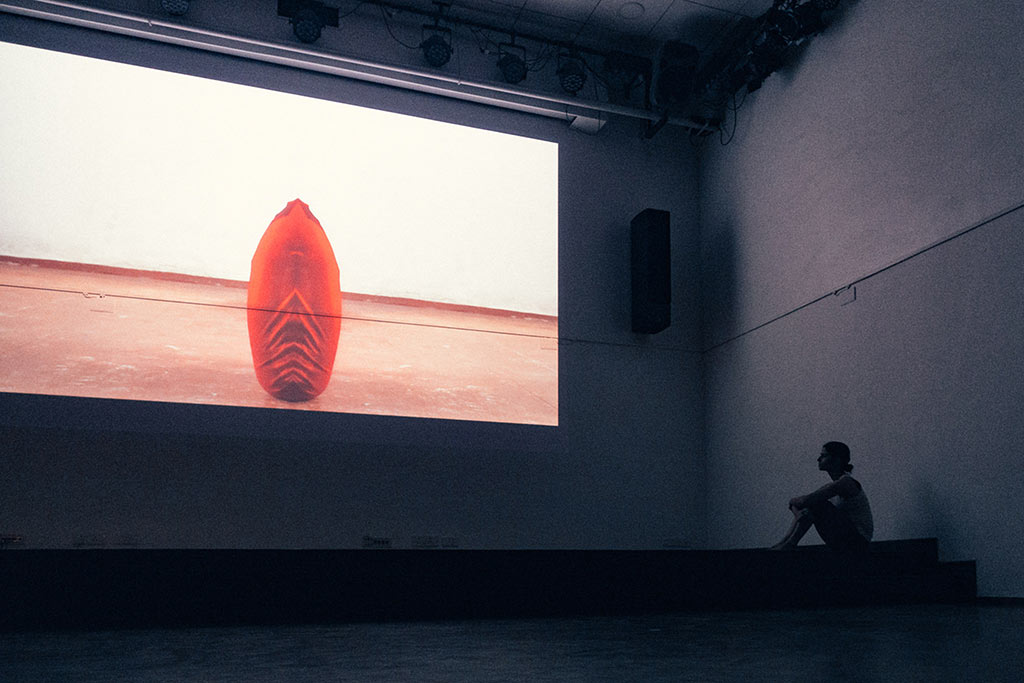
I do not have these references in my body and so for me the contemporary is not merely a response to the classical. And while many discourses in India since the 1980s have borrowed the Western lens for identifying and defining the contemporary in dance and other histories in India, the classical has not been the start of my contemporary. My experience of contemporary dance began in 2003 while working with choreographer Padmini Chettur.
To find what ‘is’ and ‘can be’ from what ‘was’ in the body is a continuous process of the contemporary – sometimes made evident, but not necessarily or immediately by its product. Perhaps, only after a body of work can one begin to see the purpose of engaging in such a process. But let’s not get to ‘purpose’ just yet. For now, my practice of choreography, performing and teaching is centred around the body in performance.
The Moving Body and Mediating Viewer
Working on to be danced – a piece performed as live dance and video – came from a few questions and some amount of retracing of why I choose to dance. A recurring question was how do I move – not only as a result of the training I have or have not had but also as a reflection and as a choice of how do I want to move. And why? This led to or may have come from questions and deep frustrations of experiencing the potential of the body to interact without having stories imposed. There is also the question of convincing people (because I want to) that this is what abstraction allows and makes visible to us as wordless communication.
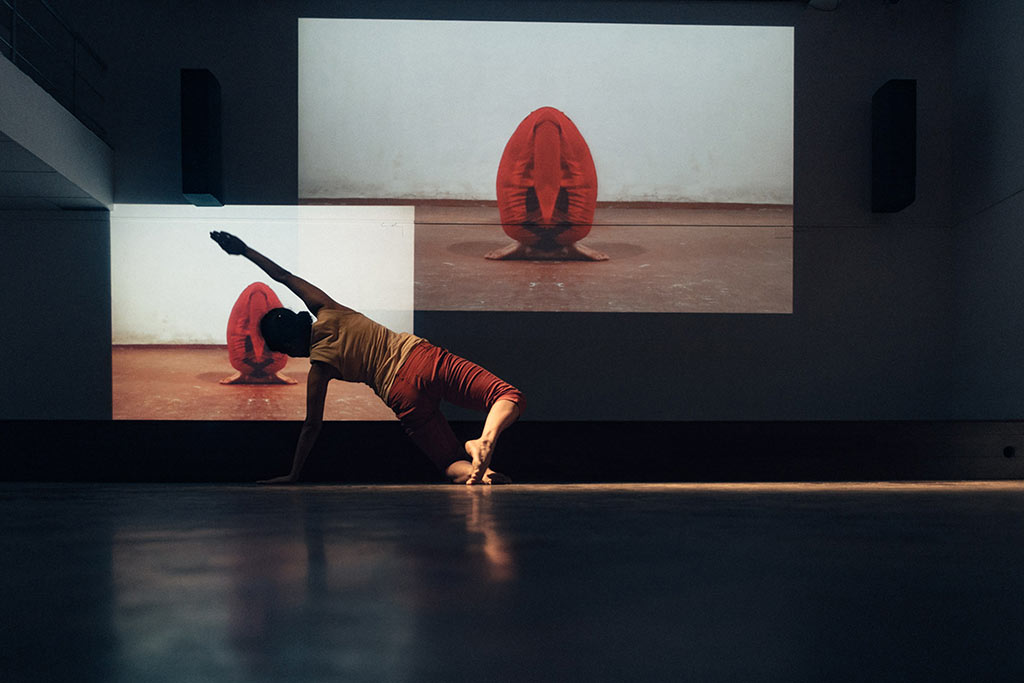
Some early explorations for movement came from observing wordless interactions between young children, below the age of three that I was working with. Of course, this communication was functional in a way, but there were also those moments of play that become evident through reading and re-engaging the body. The fact is, when you observe a baby or interact with a child, you propose stories – you are not always passive, waiting to be told something. You read, you read body and you work it out. You are not always right and it is not always the correct story and if it is not, well, then you’ll know…and, because, the child may find louder ways to protest.
As Philip Roth says, ‘The fact remains that getting people right is not what living is all about anyway. It’s getting them wrong that is living, getting them wrong and wrong and wrong and then, on careful reconsideration, getting them wrong again. That’s how we know we’re alive: we’re wrong. Maybe the best thing would be to forget being right or wrong about people and just go along for the ride. But if you can do that – well, lucky you.’ So this kind of interaction, wordless, just with sound and visually with movement, was what I was drawn to.
to be danced also comes out of larger questions around movement identity, gender and repetitive visual self-representation, something to continue thinking about, beyond this forty-five minute dance piece.
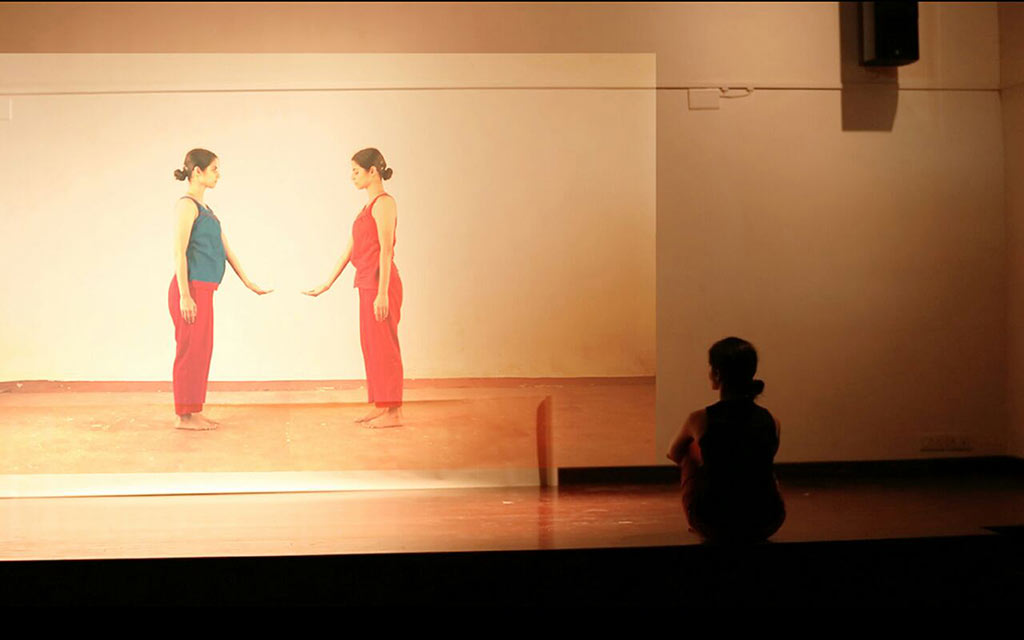
Touch and Technology
The projective moving image simultaneous to a live body is something that has stayed with me from my last solo Restricted View because these moments highlight a certain choice-making that happens – for the audience on where to look, when to look, how to engage; and for the live dancer negotiating her own presence, that of the projection and proximity to a live audience. Perhaps, these choices are reflective of the reconfigurations of self and body in this age of virtual technology, multiple selfies as representations of identity and dreams of augmented reality. The choice of video was also a result of the process of making a solo – video was a way to watch, document and clarify while working alone. I felt it was important that the projective image of the body and the live body present their interactions in to be danced.
Deliberations around technology, especially in live dance performance, do challenge me. For now, I find solace that a human moment cannot be undone or redone. Cannot be edited or colour corrected by light and dust particles or enhanced by surround sound. While we do experiment with and manipulate these moments in live performance, there is always at least one element, human or technological, that is not possible to fully control on any given day. An observation that was both liberating and frustrating during the making and performing of this piece.
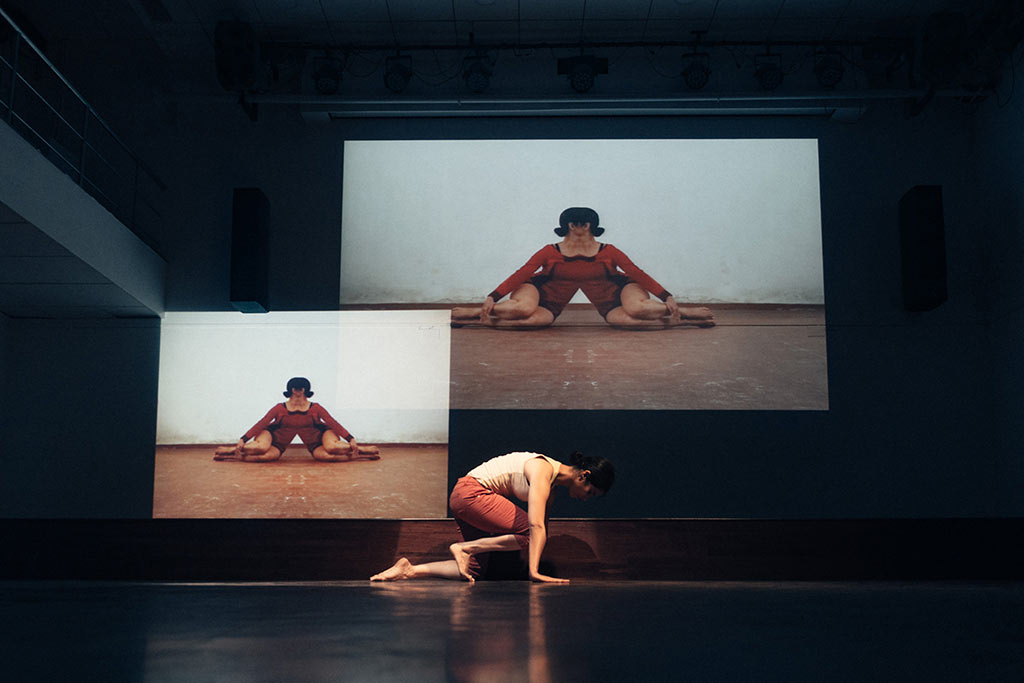
Dynamic Engagement and Fluid Boundaries
What we largely see and sense in performance is change. Along with movement in the body, a work’s temporal and spatial dynamics are both the detail and the redemption. As a performance, to be danced is primarily a visual experience. It studies and plays with the structure of the body, its small and large articulations, connections and early movement patterns that advance, regress and loop over time. Within these patterns, some impulses like touch are remembered and repeated – tactile reassurance that is common to us bipeds. The image of the mirrored-body on video became a way to explore multiplicity in abstract image-making and to play with time and space between mirrored images – syncing, not syncing, merging, separating, disappearing into, appearing away from – always proposing another image. I wanted to look at the dance beyond mirroring as an effect or as a representation of body. The overall sense and flow of time in the composition is circular, with movement, music, location of the dancer, the video projection in the performance space and light working in simple transitions, staggered overlaps and loops to punctuate each other.
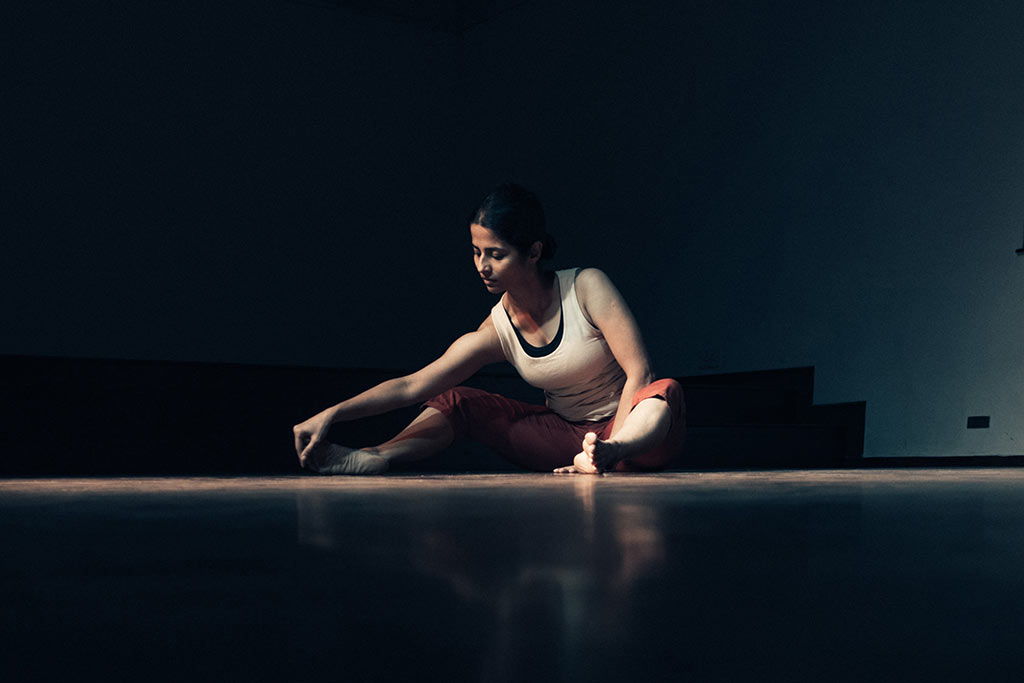
In live performance we experience imagination through and beyond what we experience as the visual. My challenge then was to dance these structured explorations afresh every time. Because even if I don’t succeed every time, renewing awareness and transformation are the elusive but driving thoughts in making and sharing a creative process.
Text / Narrative
to be danced
in unidentifiable dancing
in slow bursts of two minutes or more
by a body in light
partly reflecting partly re-arranging
building as she goes
to be danced as
breath and flesh and rhythm
to be danced by you
and her too.
pick her out the real one or the true one
she’ll pick a truth out of you
to be danced
by the one on the left and the right
together we question the predictable newness of preferably old things
and the eagerness to fill a room with words
i give instead one two no three of me
to move the ground as we choose
to be danced at the end
with humour.
because what is a foot doing,
without its remembrance of bells
making dance in madras?
making dance in madras.
___________________________________________________________
Photographs by Kunal Daswani.
Share